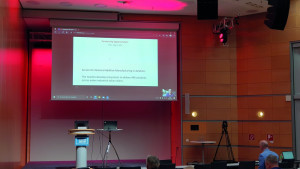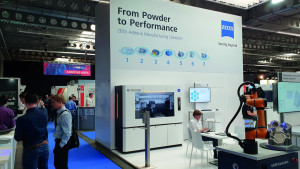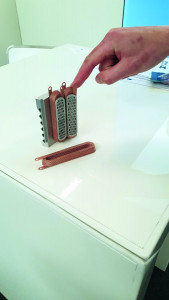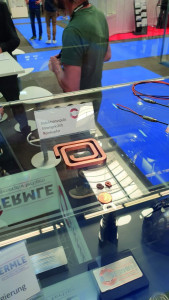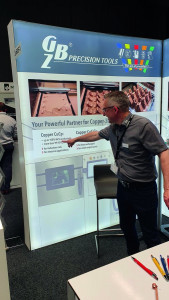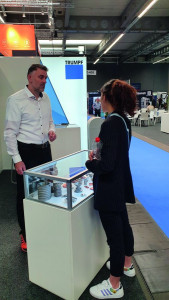The rapid.tech 3D trade fair for 3D printing and additive manufacturing finally took place again in Erfurt - very compact, but well attended. The trade fair days were accompanied by a congress on the cost-efficient production of spare parts and developments in the field of printing technologies.
Even though it was already very warm in mid-May, exhibitors and visitors made extensive use of the opportunity to engage in lively discussions in the various indoor areas of the trade fair and the congress.
Seemingly normal, online contributions were integrated into this face-to-face event during the congress - a suboptimal solution. However, as it remained the exception rather than the rule, this was perfectly acceptable for today's times(Fig. 1).
The congress and its parallel events offered a broad program. From additive spare parts manufacturing with precision to new research approaches for 3D printing, a lot was shown and presented. Direct contact with the speakers was also possible and informative.
Well-known companies such as Zeiss and Trumpf were represented in the exhibition hall. While Trumpf demonstrated its laser expertise for 3D printing, Zeiss clearly focused on production-related measurement technology and presented various 3D scanning options and analysis tools for real-time production support(Fig. 2, 3).
The internally cooled induction coil, which was presented at the Hermle stand, offered an interesting approach. Readers of this article will certainly be able to think of some ingenious applications(Fig. 4).
Several suppliers now also offer a wide range of copper-based materials for 3D printing. At the last rapid.tech 3D, it was often still a secret. Now you can find out openly about the different materials, their combinations and advantages(Fig. 5).
Among the current favorites are 'CuCp' for electrical applications (high conductivity) and 'CuCrZr', e.g. for thermal management (excellent mechanical properties), as well as 'CuSn6' from other suppliers for various applications(Fig. 6).
Outlook
Some processes, technologies and products were no longer on show at rapid.tech 3D. However, this does not mean that they have disappeared from the market. On the contrary: they seem to have reached the break-even point right now, and suppliers are focusing on production and their customers.
 PRINT' research project - wire-based 3D printing
PRINT' research project - wire-based 3D printing
Alongside NanoDimension, the search for Additive Drives was also in vain this time, although the start-up from Freiberg in Saxony is located almost around the corner as a manufacturer of highly efficient electric motors.
The new technologies and processes have great potential for future high-performance modules, e.g. electric motors, but also for filigree sensors. One challenge still seems to be the combination of fine structures and volume structures. The 3D-printed metal structure '3D-PxS' could be one approach.
It remains to be seen whether 3D printing technology will be a game changer in the electronics sector. On the one hand, 3D printing of electrically conductive materials - as ink or powder - is still associated with high entry costs. Secondly, the manufacturing times that can be achieved are still too long for production in medium and large quantities.
We can be curious.
Sources
Jan Kostelnik: Trends in AVT - from 3D printed copper structures to stretchable and conformable, 77th SAET working group in cooperation with the FED - Der Norden grüßt, Dresden, 08.12.2021
www.additive-drives.de
Fraunhofer IWS, PZH UNI Hannover


